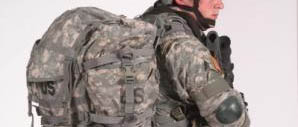SURVIVAL KITS
The environment is the key to the types of items you will need in your survival kit. How much equipment you put in your kit depends on how you will carry the kit. A kit carried on your body will have to be smaller than one carried in a vehicle. Always layer your survival kit, keeping the most important items on your body. For example, your map and compass should always be on your body. Carry less important items on your load-bearing equipment. Place bulky items in the rucksack.
In preparing your survival kit, select items you can use for more than one purpose. If you have two items that will serve the same function, pick the one you can use for another function. Do not duplicate items, as this increases your kit’s size and weight.
Your survival kit need not be elaborate. You need only functional items that will meet your needs and a case to hold the items. For the case, you might want to use a Band-Aid box, a first aid case, an ammunition pouch, or another suitable case.
The case should be:
Water repellent or waterproof.
Easy to carry or attach to your body.
Suitable to accept varisized components.
Durable.In your survival kit you should have:
First aid items.
Water purification tablets or drops.
Fire starting equipment.
Signaling items.
Food procurement items.
Shelter items.Some examples of these items are:
Lighter, metal match, waterproof matches.
Snare wire.
Signaling mirror.
Wrist compass.
Fish and snare line.
Fishhooks.
Candle.
Small hand lens.
Oxytetracycline tablets (diarrhea or infection).
Water purification tablets.
Solar blanket.
Surgical blades.
Butterfly sutures.
Condoms for water storage.
Chap Stick.
Needle and thread.
Knife.The information was gleaned from: FM 21-76 US ARMY SURVIVAL MANUAL
The takeaway from this is to tailor a survival kit to the specific need or environment that you will be encountering, and to included items that may serve multiple purposes. Keep it as light weight as is practical. The US Army survival kit recommendation is most likely going to be different from a typical civilian survival kit, however it may be helpful to read what it is that they recommend for their soldiers at a minimum.
Seeing that there is no food (or water) listed in the kit, the assumption is that the person will procure their own.
If you enjoyed this, or topics of survival preparedness or current events risk awareness,
check out our homepage articles…
http://feedproxy.google.com/~r/ModernSurvivalBlog/~3/iITMcwuRZdE/

No comments:
Post a Comment
Note: only a member of this blog may post a comment.